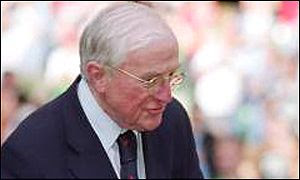It's cooled off a bit in the last couple of weeks, but there are still two or three months to go before we get any snowy nights (like the one described in this poem) around here. One can always dream and hope....
I still remember my chief's reaction when he first read this - "It's a dachshund. They're going possum hunting with a dachshund!?"
Carmen PossumThe nox was lit by lux of Luna,
And 'twas a nox most opportuna
To catch a possum or a coona;
For nix was scattered o'er this mundus,
A shallow nix, et non profundus.
On sic a nox with canis unus,
Two boys went out to hunt for coonus.
The corpus of this bonus canis
Was full as long as octo span is,
But brevior legs had canis never
Quam had hic dog; et bonus clever.
Some used to say, in stultum jocum
Quod a field was too small locum
For sic a dog to make a turnus
Circum self from stem to sternus.
Unis canis, duo puer,
Nunquam braver, nunquam truer,
Quam hoc trio nunquam fuit,
If there was I never knew it.
This bonus dog had one bad habit,
Amabat much to tree a rabbit,
Amabat plus to chase a rattus,
Amabat bene tree a cattus.
But on this nixy moonlight night
This old canis did just right.
Nunquam treed a starving rattus,
Nunquam chased a starving cattus,
But sucurrit on, intentus
On the track and on the scentus,
Till he trees a possum strongum,
In a hollow trunkum longum.
Loud he barked in horrid bellum,
Seemed on terra vehit pellum.
Quickly ran the duo puer
Mors of possum to secure.
Quam venerit, one began
To chop away like quisque man.
Soon the axe went through the truncum
Soon he hit it all kerchunkum;
Combat deepens, on ye braves!
Canis, pueri et staves
As his powers non longius carry,
Possum potest non pugnare.
On the nix his corpus lieth.
Down to Hades spirit flieth,
Joyful pueri, canis bonus,
Think him dead as any stonus.
Now they seek their pater's domo,
Feeling proud as any homo,
Knowing, certe, they will blossom
Into heroes, when with possum
They arrive, narrabunt story,
Plenus blood et plenior glory.
Pompey, David, Samson, Caesar,
Cyrus, Black Hawk, Shalmanezer!
Tell me where est now the gloria,
Where the honors of victoria?
Nunc a domum narrent story,
Plenus sanguine, tragic, gory.
Pater praiseth, likewise mater,
Wonders greatly younger frater.
Possum leave they on the mundus,
Go themselves to sleep profundus,
Somniunt possums slain in battle,
Strong as ursae, large as cattle.
When nox gives way to lux of morning,
Albam terram much adorning,
Up they jump to see the varmin,
Of the which this is the carmen.
Lo! possum est resurrectum!
Ecce pueri dejectum,
Ne relinquit back behind him,
Et the pueri never find him.
Cruel possum! bestia vilest,
How the pueros thou beguilest!
Pueri think non plus of Caesar,
Go ad Orcum, Shalmanezer,
Take your laurels, cum the honor,
Since ista possum is a goner!

Click on the "
Poetry Friday" button at left for this week's round-up, which is hosted by
HipWriterMama.
 Citation: For his gallant conduct during the operations [during the 1873-74 Ashanti Campaign], and especially at the taking of Becquah.
Citation: For his gallant conduct during the operations [during the 1873-74 Ashanti Campaign], and especially at the taking of Becquah.











































